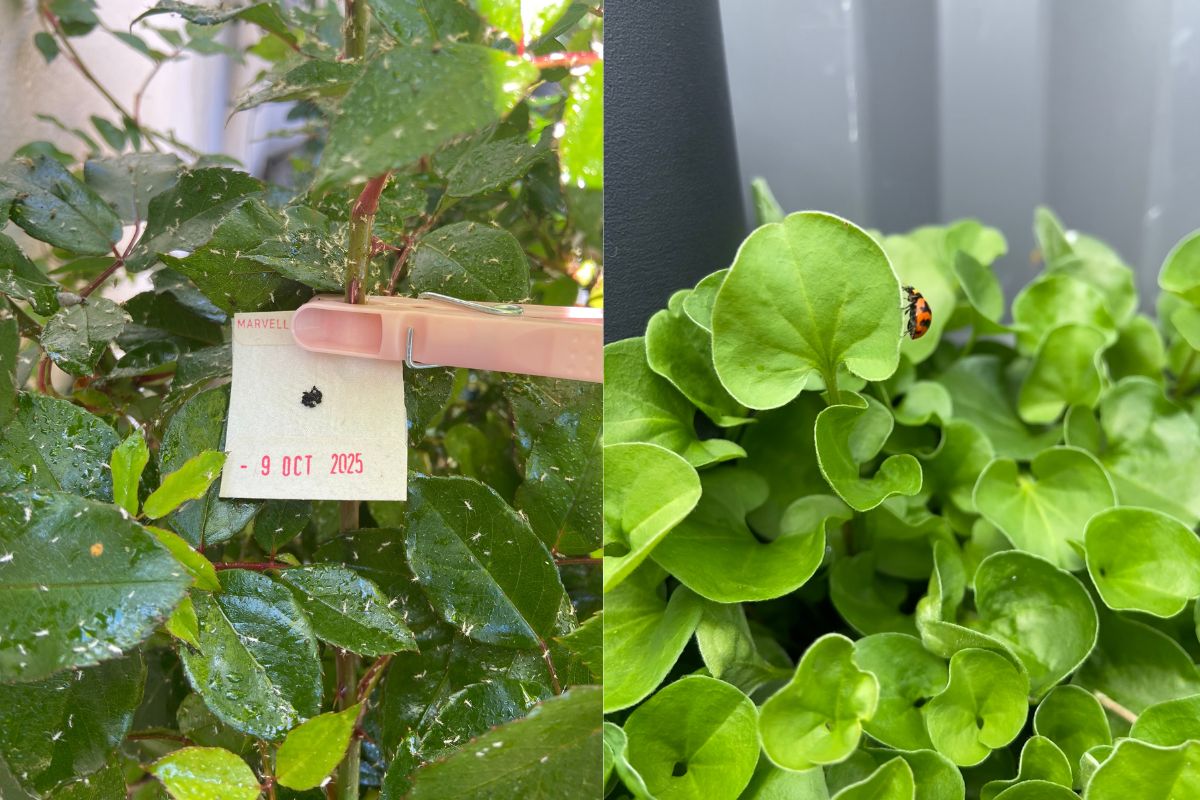Complete the WA Forest Survey Today!
Trees, and the majestic forests they form, are critical to the fabric of the communities in which we live. We know that they are absolutely central to the fight against global climate change, not least because of their role as carbon sinks. They provide habitats for a smorgasbord of animal and plant life, as well as valuable shade and recreational spaces for humans.

Trees and forests are essential to the fabric of our communities (Photo credit: Zack Smith Byn)
Mature trees with deep and wide root systems are much better at utilising and storing rain, and forested areas increase humidity, which can attract rainfall to that particular area. In the drying climate of Western Australia, the presence of forests and trees can directly reduce the water usage in both home gardens and agriculture.

Trees provide an important shade canopy and wind break for this veggie garden (Photo credit: Sincerely Media)
Forested areas shield against pollution, direct and slow winds - of particular relevance to our hot, dry summer winds - and they can actually play a part in slowing down a bushfire. The protection of a forest can increase the yield of wind sensitive crops, and regulate climate.
The interactions of trees and forests with other plants, animals and fungi, and environmental phenomena such as fires and flooding, have led to the evolution of a remarkable diversity of species, genes, functions and ecosystems. The complex fungi network within ancient forests symbiotically utilises the mature tree’s root system for delivering messages to every plant in the forest ecosystem for overall health of the ecosystem.
Reforestation - no quick fix
There is no simple, one size fits all recipe for forest restoration. Poorly planned tree planting programs actually have the potential to increase CO2 emissions and have long term negative impacts on biodiversity, landscapes and livelihoods. Negative outcomes of reforestation programs are mostly associated with the extensive use of exotic monoculture plantations, rather than restoration approaches that encourage a diverse, carbon‐rich mix of native tree species (Brancalion et al., 2018; Heilmayr et al., 2020; Lewis et al., 2019).
Researchers have recognised that there are escalating and interconnected threats to biodiversity through deforestation, global climate change and poverty. But all too often, centuries old natural forests abundant with plants, animals and fungi, are replaced by commercial timber plantations, lacking in biodiversity and likely to be harvested in just a few years rather than establishing habitats for hundreds of years to come.
What can we do to make a difference?
As consumers, we are stakeholders in the process of reforestation and we can use our dollars to seek out food sourced from farmers who adopt regenerative farming practices. Withholding support for companies that contribute to land clearing, such as global food chains, is also important. Contacting your
local member of parliament with your concerns or attending protests about land clearing are good ways to become an active stakeholder.
At a grassroots level, we can protect the trees in our own backyards and avoid clearing established trees when developing our own land for housing or landscaping. Switching verges to wildlife corridors promotes biodiversity and reduces soil erosion. Plant more trees on your own property using permaculture principles: right plant, right place, right reason.

Create a wildflower verge with Australian wildflowers like these everlastings (Photo credit: Rebecca/Unsplash)
Support natural regeneration whenever possible. From a permaculture perspective when talking about reforestation, we talk about succession planting. We need to mimic what nature does, albeit in an accelerated way, when restoring cleared land. In an accelerated manner, we plant all the stages of nature’s succession plan at once to create an instant multi-tiered system.

The stages of forest succession according to permaculture principles (Photo credit: Deep Green Permaculture)
Permaculture principles set out the importance of an element analysis - where every element of the forest ecosystem relevant to the location needs to be considered. Identification of every known plant or animal known to exist in a particular area , its needs and how it interacts with every other plant or animal in the system is key.
Making it pay
Future planning of forestry systems needs to allow for old growth forests to exist among forest plantations and agricultural land in order to still be a viable source of income, while not depleting the environment. We need to think about all the products we could utilise from a healthy managed forest system besides the usual timber, fuel, employment and ecotourism. We can open our minds to the opportunities for food, animal fodder, medicines, mushrooms, dyes, honey, fibres and more.
If we do nothing, how will we pay in the long run?






Leave a comment (all fields required)